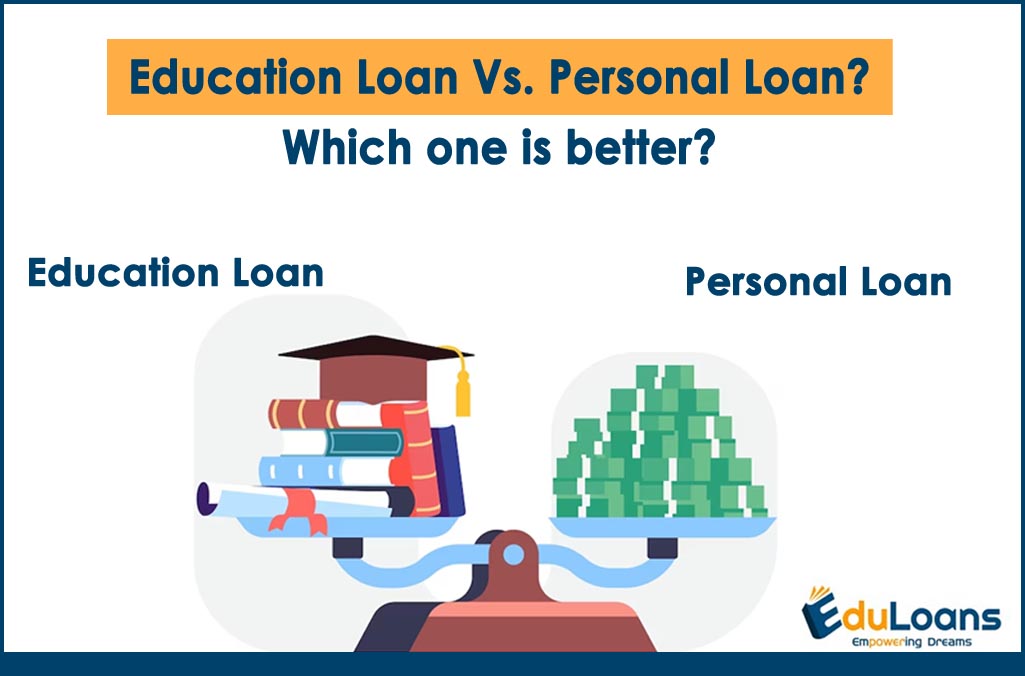
Education Loan Vs. Personal Loan? Which one is better?
Education is the cornerstone of success in today’s fast-paced and ever-changing world. However, overseas studies for Indian students can come with a hefty price tag. Many students and their families turn to study loans to bridge the financial gap. However, two common options emerge for financing educational endeavors: education loans and personal loans. This blog will tour and analyze the pros and cons of both major financing alternatives, shedding light on the better choice!
Education Loans: Making Dreams Go Real in 2023-24
Student loans have been tailored to help students pursue higher education. Banks and financial institutions provide several perks that make them an enticing option.
- Reduced Interest Rates:
One of the most appealing features of education loans service is their reduced interest rates compared to personal loans. Education loan interest rates typically range between 6% and 12%, making them more cheap and manageable in the long run.
- Grace Periods:
Education loans frequently provide a grace period that allows students to concentrate on their academics before beginning repayment. This time, which lasts six months to a year following graduation, relieves the immediate financial load and provides breathing room.
- Tax Advantages:
Many nations provide tax breaks for school loans, allowing borrowers to deduct interest payments from their taxable income. This lowers the overall loan cost and provides further monetary support.
Personal Loan: Flexibility at a Price
Personal loans are not restricted to school costs and can be used for various objectives. Let’s delve into the key aspects of personal loans and analyze their suitability for educational financing.
- No Restrictions on Usage:
Personal loans provide the flexibility to allocate funds at one’s discretion. While this may seem advantageous, it also means that the loan can be used for non-educational purposes, potentially leading to financial mismanagement.
- High-Interest Rates:
Personal loans often have higher interest rates than student loans, ranging from 10% to 24%. These rates can dramatically raise the debt burden, making long-term repayment challenging.
- Limited Grace Periods:
Personal loans often call for quick payback, leaving borrowers with little time to dwell on their academics. This additional financial strain can be adverse to academic performance and personal growth.
The Verdict: Education Loan Takes the Lead
Education loans outperform personal loans in various ways when financing higher education. Let’s highlight the key reasons why education loans service take the lead—
- Lower Interest Rates:
Education loans have lower interest rates, easing borrowers’ financial burden in the long run.
- Grace Periods:
Education loans provide a grace period after graduation, allowing students to focus on their careers without immediate payback commitments.
- Tailored for Education:
Student loans are specifically made for educational costs, ensuring that money is used only for the pursuit of learning.
- Tax Advantages:
The availability of tax breaks reduces the monetary burden linked to student loans even further.
However, evaluating individual circumstances and financial goals is critical before the final selection. In some circumstances, personal loans may be the sole alternative for those who do not satisfy the criteria for student loans. When contemplating personal loans for college finance, it is critical to thoroughly examine interest rates, repayment terms, and other associated charges.
Dream Big, Fund Bigger: Choose EduLoans for Academic Success!
At Eduloans, we aim to provide a space for students to find the best financial options for their higher education. We optimize your finances and help you develop a fulfilling career by narrowing the gap between creditors and students with the best study-abroad counseling!
Sign-up today to obtain a quick answer to your financial problems!